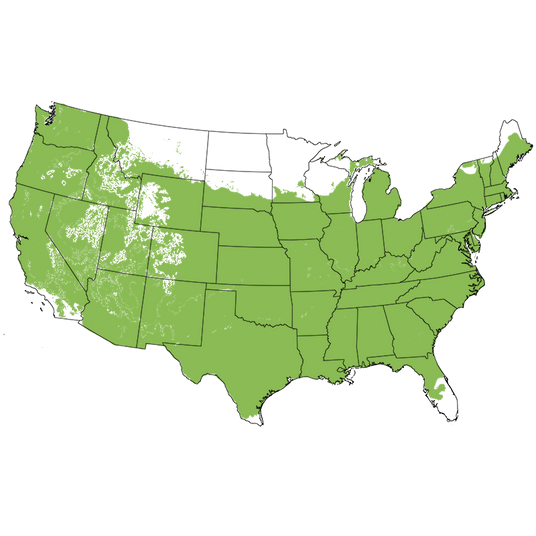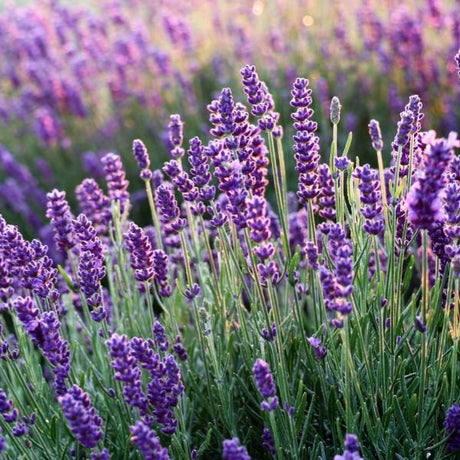Cecile Brunner Climbing Rose
Rosa x 'Cecile Brunner'
- Stay Protected with Plant Sentry ™
Cecile Brunner Climbing Rose - #2 Container is backordered and will ship as soon as it is back in stock.
Plant Sentry™
Plant Sentry™

Plant Sentry™ Protected
Your order is protected by our compliance system that:
- Prevents restricted plants from shipping to your state
- Ensures plants meet your state's agricultural requirements
- Protects gardens from invasive pests and diseases
Delivery and Shipping
Delivery and Shipping
Delivery and Shipping
Fast, Safe Plant Delivery
Ships in 3-4 business days • Tracking provided • Weather protected
| Under $50 | $9.99 |
| $50 - $99.99 | $14.99 |
| $100 - $149.99 | $16.99 |
| $150+ | $24.99 |
✓ Zone-specific timing • ✓ Professional packaging • ✓ Health guarantee
Understanding Plant Options
Nature Hills offers plants in two main formats:
- Container Plants: Grown in pots with soil, sized by container volume and plant age
- Bare Root Plants: Dormant plants without soil, sized by height measurements
Container Plant Sizes
Container sizes indicate plant age and growing capacity rather than liquid volume equivalents. Our containers follow industry-standard nursery "trade gallon" specifications, which differ from standard liquid gallon measurements.
Young Plants (6 months to 18 months old)
| Container Size | Actual Volume | Metric Equivalent |
|---|---|---|
| 2" x 2" x 3" | 0.18 - 0.21 dry quarts | 0.20 - 0.23 dry liters |
| 4" Container | 0.31 - 0.87 dry quarts | 0.35 - 0.96 dry liters |
| 4.5" Container | 0.65 dry quarts | 0.72 dry liters |
| 6" Container | 1.4 dry quarts | 1.59 dry liters |
| 1 Quart | 1 dry quart | 1.1 dry liters |
| 5.5" Container | 1.89 dry quarts | 2.08 dry liters |
Established Plants (18 months to 2.5 years old)
| Container Size | Actual Volume | Metric Equivalent |
|---|---|---|
| 2 Quart | 2 dry quarts | 2.2 dry liters |
| #1 Container | 2.26 - 3.73 dry quarts | 2.49 - 4.11 dry liters |
| 5" x 5" x 12" | 3.5 - 4.3 dry quarts | 3.85 - 4.74 dry liters |
Mature Plants (2-4 years old)
| Container Size | Actual Volume | Metric Equivalent |
|---|---|---|
| #2 Container | 1.19 - 1.76 dry gallons | 5.24 - 7.75 dry liters |
| #3 Container | 2.15 - 2.76 dry gallons | 8.14 - 12.16 dry liters |
Large Plants (3-5 years old)
| Container Size | Actual Volume | Metric Equivalent |
|---|---|---|
| #5 Container | 2.92 - 4.62 dry gallons | 12.86 - 20.35 dry liters |
| #6 Container | 5.25 - 6.01 dry gallons | 23.12 - 26.42 dry liters |
| #7 Container | 5.98 - 6.53 dry gallons | 26.34 - 28.76 dry liters |
Bare Root Plants
Bare root plants are sold by height from the root system to the top of the plant. Plants may exceed minimum height requirements.
Common Sizes:
- Trees: 1 foot, 2 feet, 3 feet, 4 feet, 5 feet, 6 feet
- Shrubs & Perennials: 1 foot, 18 inches, 2 feet
Important Notes
Container Volume Specifications
- Trade Gallon Standard: Our containers follow industry-standard "trade gallon" specifications established by the American National Standards Institute (ANSI Z60.1) for nursery stock
- Volume Variations: Actual soil volume may vary due to plant root systems and growing medium settlement
- Age Indicators: Container size primarily indicates plant age and maturity rather than liquid volume equivalents
Growing Conditions
- Plant size can vary based on variety and growing conditions
- Container size helps indicate plant maturity and establishment level
- Larger containers generally mean more established root systems and faster landscape establishment
Seasonal Availability
- Bare root plants are available seasonally when dormant
- Container plants are available throughout the growing season
- Specific varieties may have limited availability in certain sizes
Questions?
For questions about specific plant sizes or availability, please contact our plant experts who can help you choose the right size for your landscape needs.
Plant Highlights
Cecile Brunner Climbing Rose highlights at a glance!
-
Plant Class
-
Botanical Name
-
Brand
-
Growing Zones5, 6, 7, 8, 9
-
Growth RateFast
-
Mature Height
-
Mature Width
-
Leaf Color
-
Flower Color
-
Pollinator FriendlyYes
-
Bloom PeriodEarly Spring, Late Spring, Early Summer, Late Summer, Early Fall, Late Fall
-
FragrantYes
Characteristics
Where To Plant
When To Prune
- Early Spring
Water & Moisture Needs
- Moderate
Sunlight Needs
Soil Needs
- Well Drained

Growing Zones 5-9
Named after the daughter of Swiss Rosarian Ulrich Brünner, the gorgeous and long-standing favorite, Cécile Brünner Climbing Rose (Rosa x 'Cecile Brunner') is a demure sweetheart of a silvery-pink Climbing Rose! Tiny pointed buds open to full little sprays of flowers that delight you all growing season long! The fragrant blooms are perfect for adding fine-textured, soft color to the landscape!
Known as the "Sweetheart Rose", these loose, bushy and free-flowing blooms resemble Hybrid Tea flowers! They paint a dreamy picture from late spring until frost throughout a wide range of climates. Highly adaptable, this delicate-looking beauty has bright green foliage with a lightly toothy edge, perfectly highlighting the gorgeous blooms and offset by reddish stems!
It's a good thing these Roses grow tall! You'll want to stick your nose in them every chance you get to enjoy the strong, spicy, sweet Tea Rose fragrance! Highly adaptable to coastal and urban environments, this Climbing Rose will thrive throughout the sunny landscapes of USDA growing zones 5 to 9 and reach an impressive 20-30 feet in height and wide girth at 10-20 feet in width!
Planting and Application:
Butterflies and bees will be swarming to this fragrant Climbing Rose! As will the many admirers, even if you use this bushy, full Rose as a privacy and screening plant along your property's fence! Flouncy and romantic canes and cascading old-fashioned looking blooms of this Rose just beg to be draped over a picket fence or arching over a garden bench!
These tiny blossoms and soft colors make Cecile Brunner lovely to use over a garden gate or arbor. Trained over a trellis in a children's garden or adding its bright green foliage and baby pink blooms to Cottage gardens for a classically romantic look while lending height and a layered effect to the landscape!
The country looks and rustic feel of these Roses will look lovely draped over a garden gate or trailing up your porch staircase, but can equally be used in modern urban plantings and formal garden designs! Cecile Brunner serves double duty as shade, screening, and covering eyesores in voluminous beauty! Don't forget to snip a few of these blooms for a romantic bouquet for your bedside table!
- Climbing Rose With Silvery-Pink Flower Clusters
- Strong, Spicy Sweet, Tea Rose Fragrance
- Blooms All Growing Season!
- Beautiful Cut Flowers With Long Stems
- Tall, Strong Canes Reach Great Heights
- Specimens & Focal Points
#ProPlantTips for Care:
Roses do their very best in full sun and Cecile Brunner Climbing Roses are no different. For the healthiest and strongest canes, provide at least 6 hours of direct sunlight a day, favoring the morning sun. Plant in enriched, highly organic, and fertile soil that is well-drained and well-mulched to hold in moisture. Water regularly, especially throughout the hot summer months and plant in a location with good air circulation. Repeat flowering throughout the summer, these hardy Roses need a regular schedule of quality Rose fertilizers.
How to Prune and Train Climbing Roses
Pruning should not be done during the first two to three years, since Climbing Roses need time to build flowering Rose canes. These structural canes will grow thicker for several years before it is time to replace them.
Spring Pruning and Structural Rejuvenation
Remember that spring pruning is most limited to removing broken branches, and dead tips or correcting the structure of the Climbing Roses. If you remove long canes and side branching you will be removing the first set of June flowers.
- Prune Roses in early spring just as you see new buds beginning to swell.
- Remove any dead, diseased, or damaged branches.
- Identify several new, younger, more vigorous canes to become the new structural foundation of your beautiful Climbing Rose.
- Remove the fattest, oldest canes out at the soil level, if possible and right after the first set of flowers finishes. Those canes will be replaced with new shoots that develop from the base. As these new, rapidly produced shoots elongate, you will want to direct, train, and tie them into the place you would like them to develop.
Summer Maintenance and Pruning
Horizontal branches produce the most flowers. Prune these secondary canes after flowering, because Climbing Roses bloom on last year's canes (old wood).
- Cut your secondary canes down to 6 - 8 inches above a bud after the first flush of flowers has finished.
- Trim the secondary canes back at 90 to 45-degree angles.
- Keep your structural support canes in place.
In colder regions it may be more difficult to maintain Climbing Roses, so choosing your planting site is important.
Winter protection is best for Roses grown in zones 7 and colder. Mulch is your best, more natural way to overwinter roses by mounding the dormant canes in late fall. Don't fall prune, rather instead wait until spring.
Named after the daughter of Swiss Rosarian Ulrich Brünner, the gorgeous and long-standing favorite, Cécile Brünner Climbing Rose (Rosa x 'Cecile Brunner') is a demure sweetheart of a silvery-pink Climbing Rose! Tiny pointed buds open to full little sprays of flowers that delight you all growing season long! The fragrant blooms are perfect for adding fine-textured, soft color to the landscape!
Known as the "Sweetheart Rose", these loose, bushy and free-flowing blooms resemble Hybrid Tea flowers! They paint a dreamy picture from late spring until frost throughout a wide range of climates. Highly adaptable, this delicate-looking beauty has bright green foliage with a lightly toothy edge, perfectly highlighting the gorgeous blooms and offset by reddish stems!
It's a good thing these Roses grow tall! You'll want to stick your nose in them every chance you get to enjoy the strong, spicy, sweet Tea Rose fragrance! Highly adaptable to coastal and urban environments, this Climbing Rose will thrive throughout the sunny landscapes of USDA growing zones 5 to 9 and reach an impressive 20-30 feet in height and wide girth at 10-20 feet in width!
Planting and Application:
Butterflies and bees will be swarming to this fragrant Climbing Rose! As will the many admirers, even if you use this bushy, full Rose as a privacy and screening plant along your property's fence! Flouncy and romantic canes and cascading old-fashioned looking blooms of this Rose just beg to be draped over a picket fence or arching over a garden bench!
These tiny blossoms and soft colors make Cecile Brunner lovely to use over a garden gate or arbor. Trained over a trellis in a children's garden or adding its bright green foliage and baby pink blooms to Cottage gardens for a classically romantic look while lending height and a layered effect to the landscape!
The country looks and rustic feel of these Roses will look lovely draped over a garden gate or trailing up your porch staircase, but can equally be used in modern urban plantings and formal garden designs! Cecile Brunner serves double duty as shade, screening, and covering eyesores in voluminous beauty! Don't forget to snip a few of these blooms for a romantic bouquet for your bedside table!
- Climbing Rose With Silvery-Pink Flower Clusters
- Strong, Spicy Sweet, Tea Rose Fragrance
- Blooms All Growing Season!
- Beautiful Cut Flowers With Long Stems
- Tall, Strong Canes Reach Great Heights
- Specimens & Focal Points
#ProPlantTips for Care:
Roses do their very best in full sun and Cecile Brunner Climbing Roses are no different. For the healthiest and strongest canes, provide at least 6 hours of direct sunlight a day, favoring the morning sun. Plant in enriched, highly organic, and fertile soil that is well-drained and well-mulched to hold in moisture. Water regularly, especially throughout the hot summer months and plant in a location with good air circulation. Repeat flowering throughout the summer, these hardy Roses need a regular schedule of quality Rose fertilizers.
How to Prune and Train Climbing Roses
Pruning should not be done during the first two to three years, since Climbing Roses need time to build flowering Rose canes. These structural canes will grow thicker for several years before it is time to replace them.
Spring Pruning and Structural Rejuvenation
Remember that spring pruning is most limited to removing broken branches, and dead tips or correcting the structure of the Climbing Roses. If you remove long canes and side branching you will be removing the first set of June flowers.
- Prune Roses in early spring just as you see new buds beginning to swell.
- Remove any dead, diseased, or damaged branches.
- Identify several new, younger, more vigorous canes to become the new structural foundation of your beautiful Climbing Rose.
- Remove the fattest, oldest canes out at the soil level, if possible and right after the first set of flowers finishes. Those canes will be replaced with new shoots that develop from the base. As these new, rapidly produced shoots elongate, you will want to direct, train, and tie them into the place you would like them to develop.
Summer Maintenance and Pruning
Horizontal branches produce the most flowers. Prune these secondary canes after flowering, because Climbing Roses bloom on last year's canes (old wood).
- Cut your secondary canes down to 6 - 8 inches above a bud after the first flush of flowers has finished.
- Trim the secondary canes back at 90 to 45-degree angles.
- Keep your structural support canes in place.
In colder regions it may be more difficult to maintain Climbing Roses, so choosing your planting site is important.
Winter protection is best for Roses grown in zones 7 and colder. Mulch is your best, more natural way to overwinter roses by mounding the dormant canes in late fall. Don't fall prune, rather instead wait until spring.
Learn about winterizing, and un-wintering your Roses in our Garden Blog, plus all the tips and tricks you need when pruning your new prize Rose bush!
- Full Sun & Good Air Circulation
- Moderate Yet Regular Moisture Needs
- Enriched, Highly-Organic Well-Drained Soil
- Prune After in June Bloom Is Done & Encourage Rebloom
- Extremely Cold Hardy Roots
- Coastal & Urban Environment Tolerant
- Appreciates Mulched Garden Beds
A favorite since the Victorian era, these dainty silvery-pink blooms have been a favorite for a long time, and it's easy to see why! Order your own Cecile Brunner Climbing Rose today at NatureHills.com!
Climbing Rose FAQs
Where Is The Best Place To Plant Roses?
Roses need a protected location and prefer full sun and favor the drying power of the morning sun and flower best in at least 6 hours of direct sunlight a day. Choose a location in good, enriched soil that drains well and has good air circulation.
What Is The Best Month to Plant Roses?
You can plant Roses any time if you are able to provide enough consistent moisture and attention. While there is not a specific month that is best, generally because it changes with temperatures, climate and growing zone. However, the easiest times of the year to get Rose bushes established in your landscape are in spring after the last frost date, and in fall about 4-6 weeks before the first frost.
Do Roses Come Back Every Year?
Climbing Roses are deciduous woody perennial shrubs and will return bigger and better each year.
How Do I Find Climbing Roses, Rose Bushes & Trees for Sale Near Me?
Make your life easier and your yard happier by shopping for Roses at NatureHills.com online nursery. You'll find a massive selection of Rose bushes for sale, including many lovely Tree-form and Climbing Rose varieties!
Choose the right shrub for your area by first finding your growing zone by entering your zip code in the field above the Plant Highlights section on our product pages. Narrow down your options by plant hardiness zone, sun availability, and size requirements.
Place your order, knowing it's backed by the Nature Hills Nursery product guarantee and protected by Plant Sentry™, which helps ensure regulated plant materials aren't sent to prohibited areas.
Expect to receive your plants at the appropriate planting time for your growing zone when temperatures are safest to ship through and into.
What Shipping Options Do You Offer?
NatureHills.com works closely with our growers and nursery professionals to ensure we ship when it is most appropriate for your area. Our goal is to deliver the hardiest plants by avoiding extreme high and low temperatures. Check out our shipping schedule for more information and to learn our wills and don'ts when it comes to shipping plants. Find your Roses for sale here at NatureHills.com!








